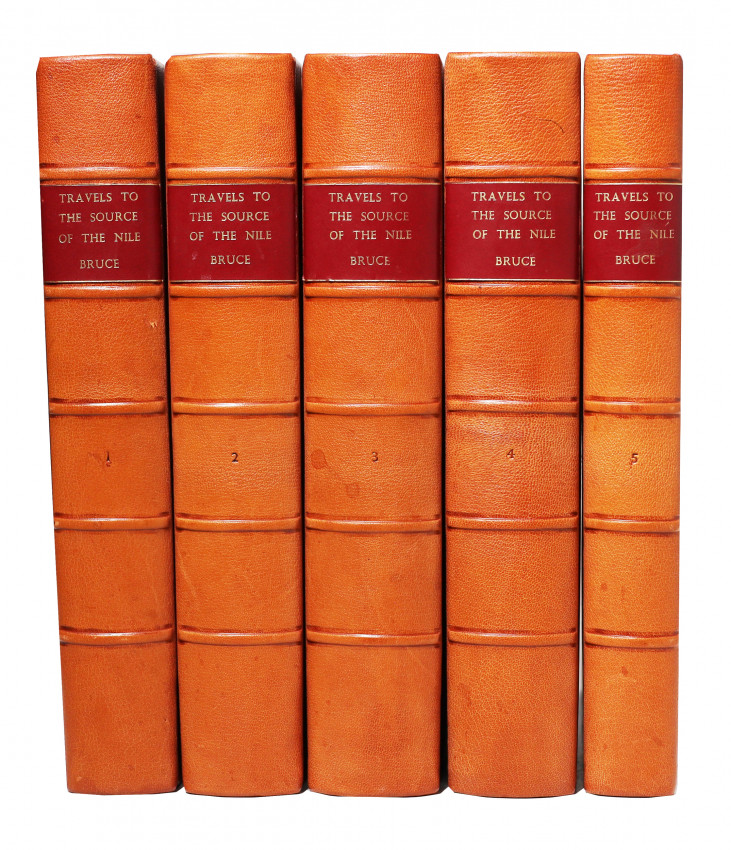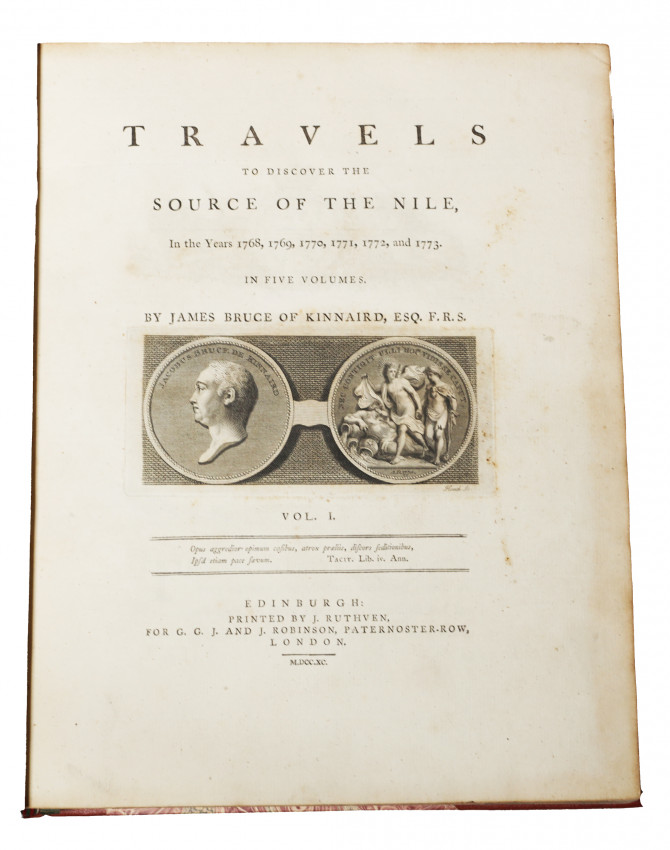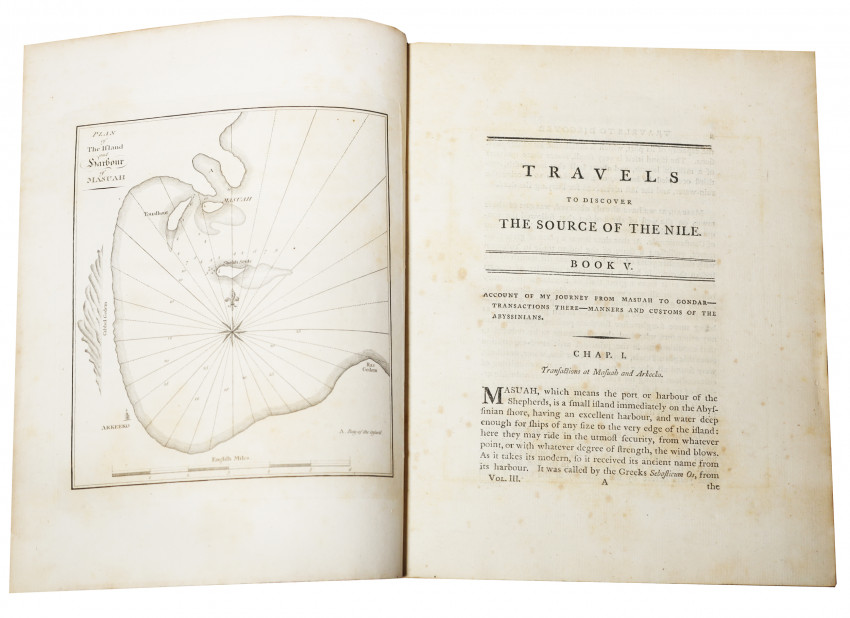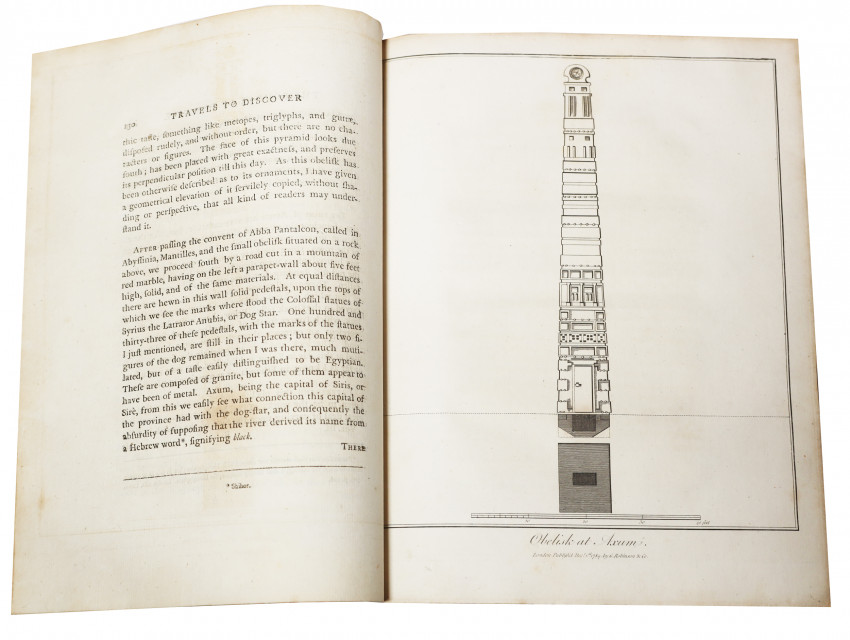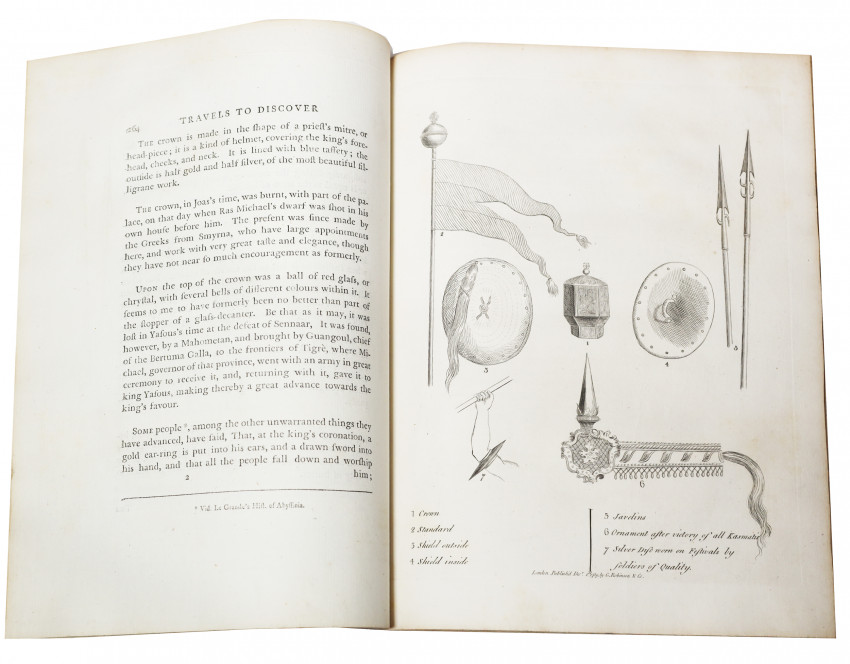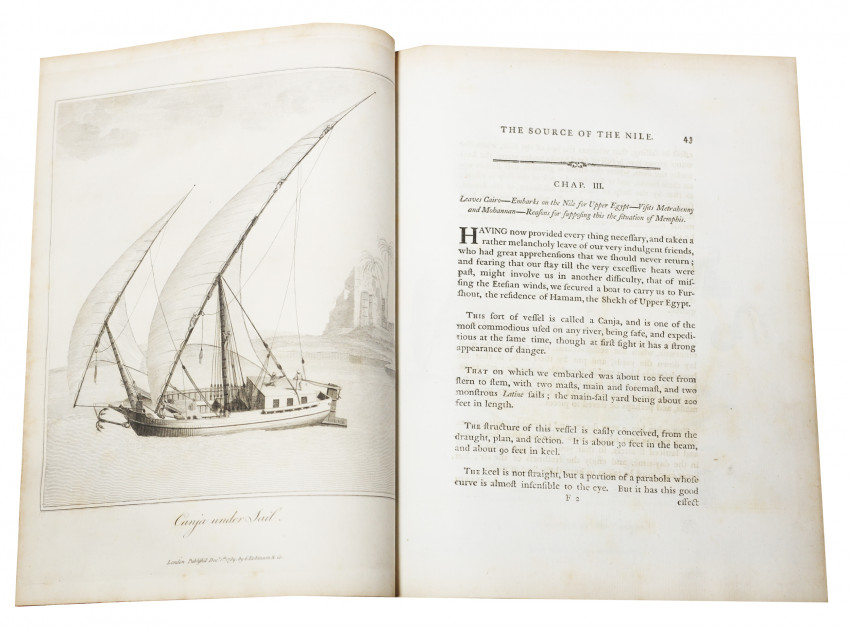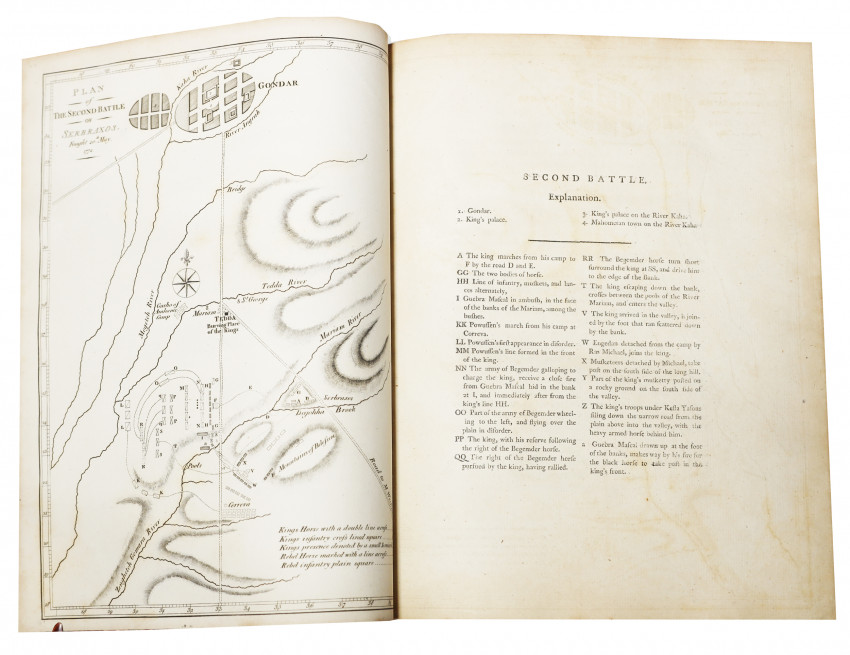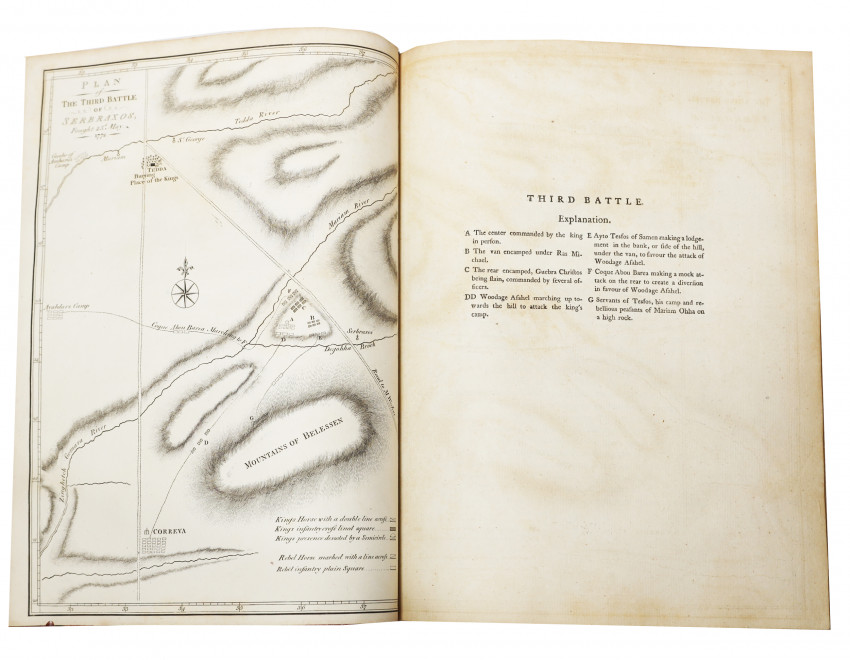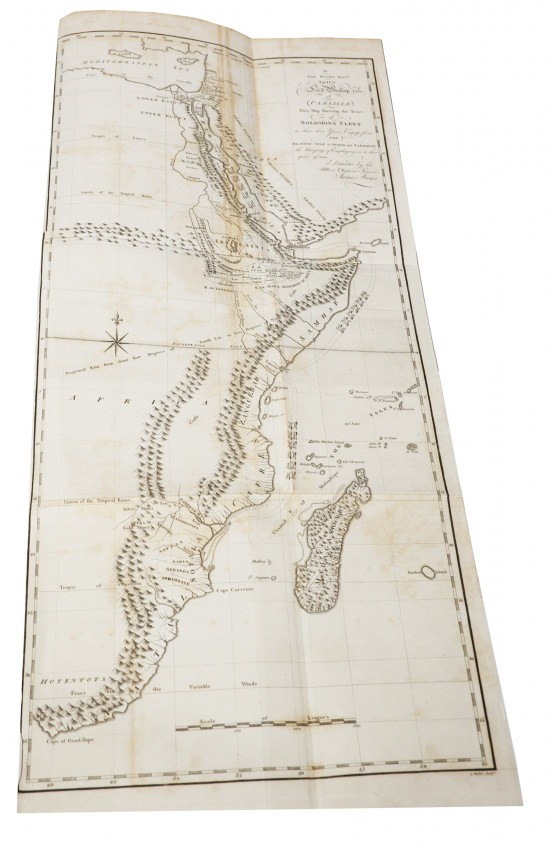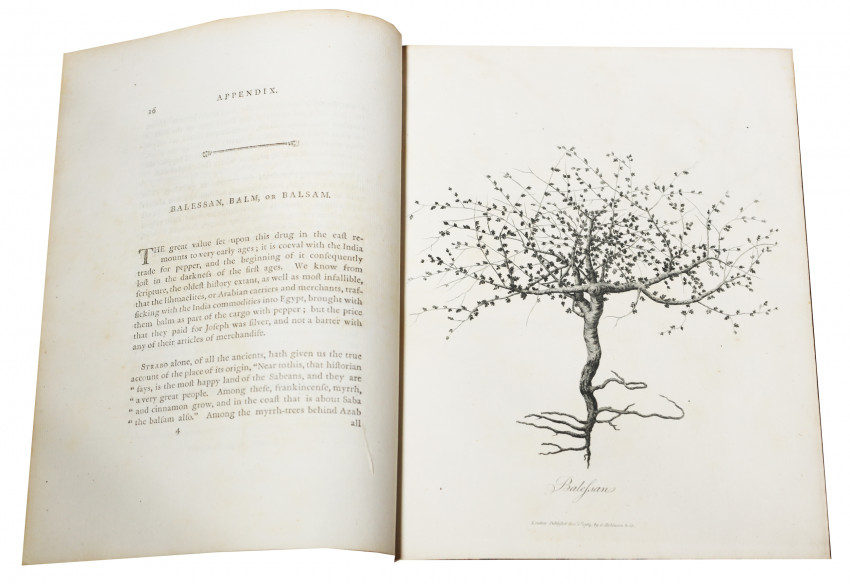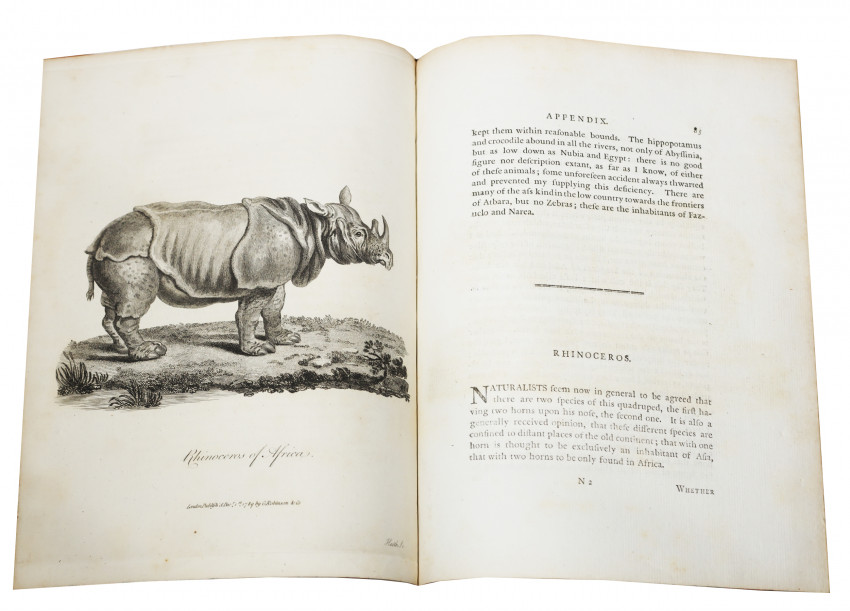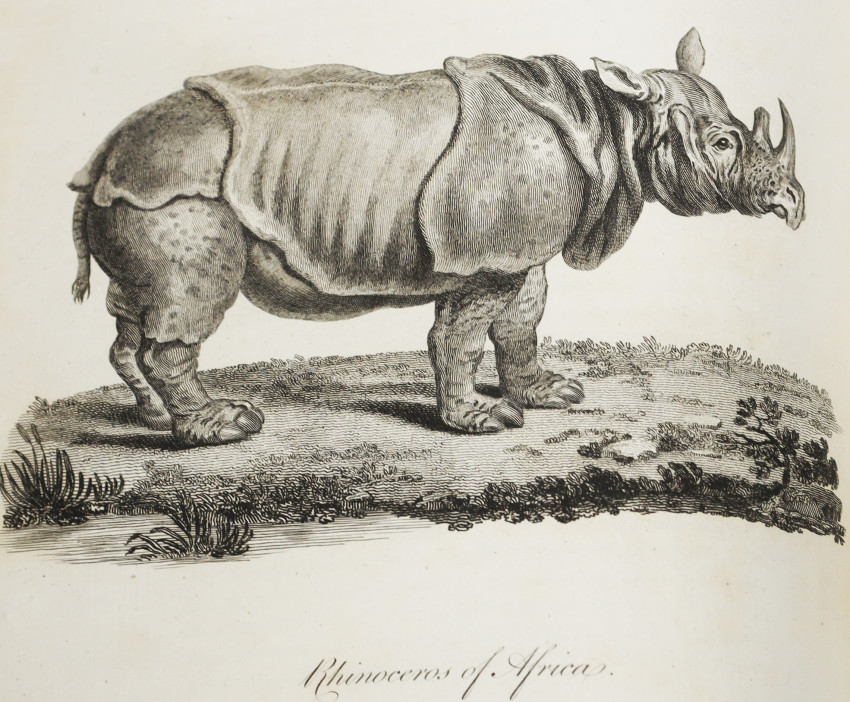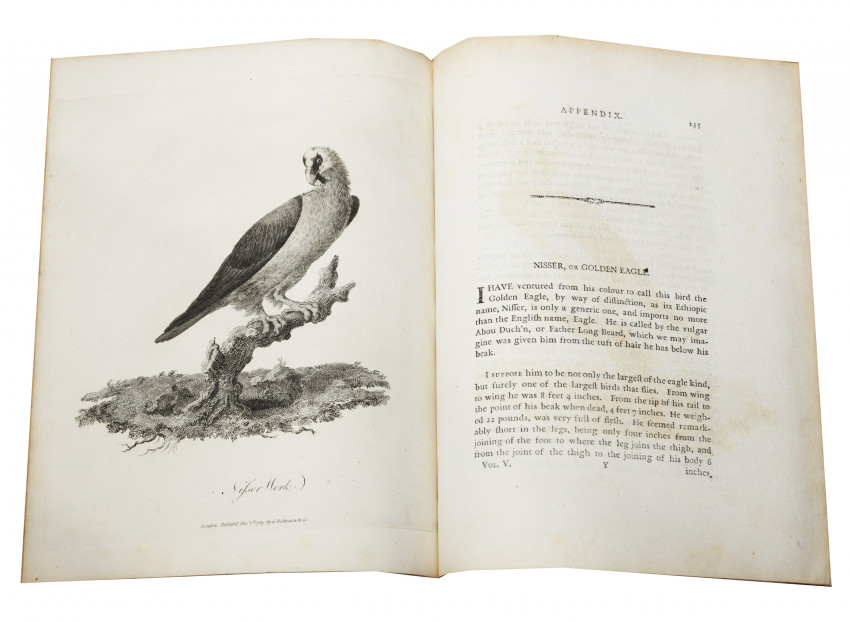in the Years 1768, 1769, 1770, 1771, 1772, and 1773
In five volumes
First edition: 5 volumes. Vol. 1 [x], lxxxv, 535; Vol. 2 [ii], viii, 718; Vol. 3 [ii], viii,744 - should be 759 – the register pages 745 -759 bound in volume 4; Vol. 4 [ii], viii, 695 - pages 691 – 695 bound in volume 3; Vol. 5 [ii], xiv, 230, [12] 3 large folding maps at the back of volume 5, 50 plates (including plants, beasts and birds), 3 battle plans with explanatory notes in vol. IV, rebound in half morocco with matching marbled boards and edges, red title labels gilt on the spines, a very good set.
The Scottish explorer James Bruce (1730-1794) introduced Ethiopia to the Western world and confirmed the source of the Blue Nile. He was the first modern explorer of tropical Africa. He was born on Dec. 14, 1730, near Larbert in Stirlingshire. His father, the laird of Kinnaird House and a descendant of the prominent Bruce family.
Bruce visited Andalusia in 1757, where he became interested in the history of Moorish Spain and of the Arabs who had created it, and then toured northern Europe. On his father's death the following year, Bruce became the laird of Kinnaird.
Bruce obtained the post of consul general in Algiers in 1762, but he took nearly a year to reach the city. He traveled through France and Italy, investigating and sketching Roman ruins and writing essays on classical civilization. As consul general in Algiers to 1765, the ever-querulous Bruce succeeded primarily in alienating both the local rulers and his British associates. However, he acquired a knowledge of Arabic, skill as a horseman, and experience in Oriental society. In 1765 he made two journeys among the Berber peoples of the interior and then traveled through North Africa, the Aegean, and the Levant.
From 1768 to 1772 Bruce was engaged in the adventures on which his fame depends. Traveling first up the Nile in 1769 and then along the Red Sea, he finally reached Massawa, the main port of what became the Eritrean province of Ethiopia. He spent the major portion of his Ethiopian period in and around Gondar, the imperial capital. This epoch coincided with political upheavals in the empire and the rise of provincial warlords, the chronicle of which is narrated at some length in Bruce's five-volume Travels to Discover the Source of the Nile (1790). He also discussed Ethiopia's history, monuments, art, geography, and natural history.
Bruce gathered detailed and still significant orally derived accounts of the Ethiopian past and made observations on the state of the nation in the late 18th century. During the course of his stay in Ethiopia he also observed the flow of the Blue Nile from its source in Lake Tana. On his way home in 1772 he spent some months in the Funj kingdom of Sennar (now the Sudan), for which his published writings again constitute a valuable record.
https://biography.yourdictionary.com/james-bruce
- Overall Condition: A very good set
- Size: 4to (310 x240mm)
- Sold By: Clarke's Africana & Rare Books
- Contact Person: Paul Mills
- Country: South Africa
- Email: [email protected]
- Telephone: 021 794 0600
- Preferred Payment Methods: Visa & Mastercard via PayGate secure links and Bank transfers.
- Trade Associations: ABA - ILAB, SABDA


